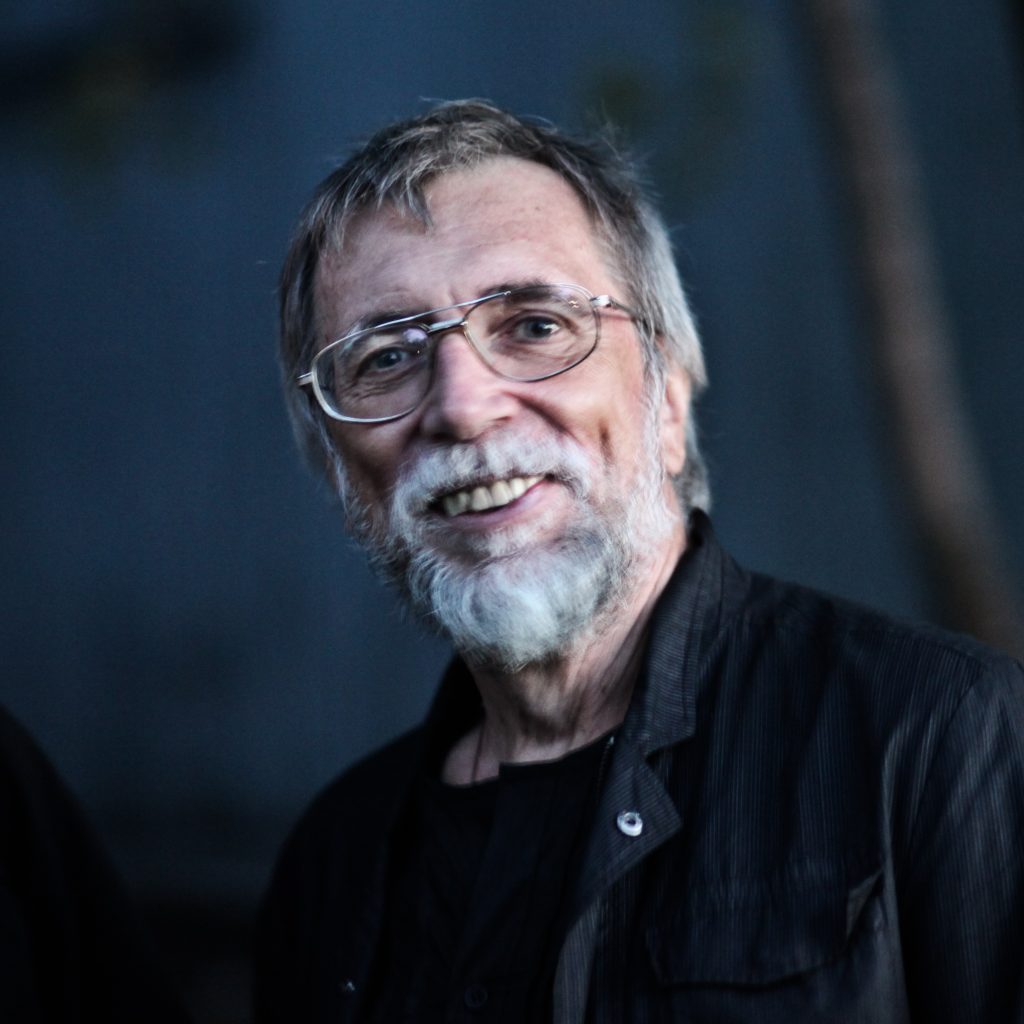

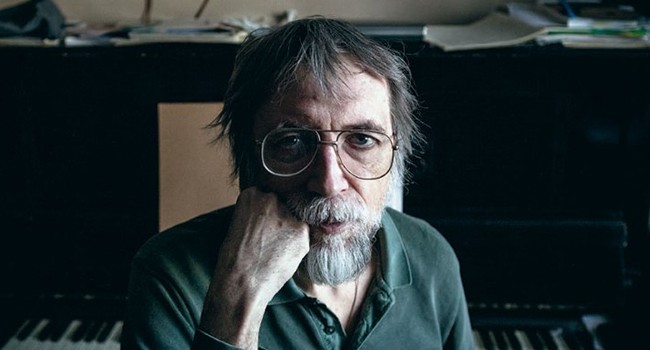
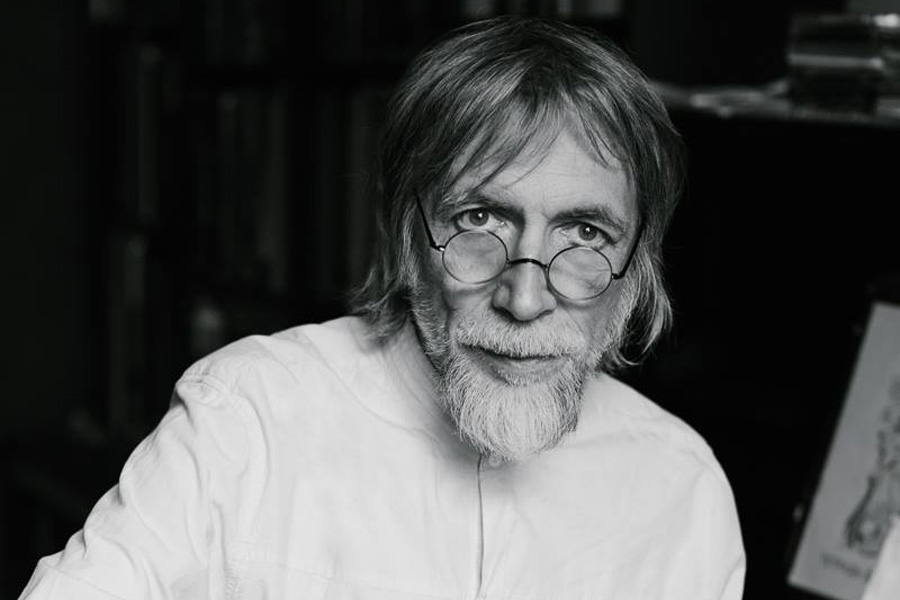
Martynov (Moscow, 20 February 1946) is a Russian composer, known for his compositions in the concerto, orchestral music, chamber music, and choral music genres.
Life
Vladimir Martynov studied piano as a child. Gaining an interest in composition, he enrolled in the Moscow Conservatory where he studied piano under Mikhail Mezhlumov and composition under Nikolai Sidelnikov, graduating in 1971.
In his early works, such as the String Quartet (1966), the Concerto for oboe and flute (1968), Hexagramme for piano (1971), and Violin sonata (1973), Vladimir Martynov used serial music (or twelve-tone) technique. In 1973 he got a job at the studio for electronic music of the Alexander Scriabin Museum. For Soviet composers of this era, this studio had much the same meaning as the RAI Electronic Music Studio in Milan, the West German Radio studio, and the ORTF Studio in Paris, providing a meeting ground for the avant-garde musicians. Sofia Gubaidulina, Sergei Nemtin, Alfred Schnittke, and Edison Denisov were among the composers regularly working and meeting there.
Martynov helped to form a rock group called Boomerang at the Scriabin Studio. For them he wrote a rock opera Seraphic Visions from St. Francis of Assisi (1978).
Vladimir Martynov is also known as a serious ethnomusicologist, specializing in the music of the Caucasian peoples, Tajikistan, and other ethnic groups in Russia. He also studied medieval Russian and European music, as well as religious musical history and musicology. While even in Soviet times this field of study was considered generally acceptable, it also allowed him to study theology, religious philosophy and history. Vladimir Martynov began studying early Russian religious chant in the late 1970s; he also studied Renaissance music of such composers as Machaut, Gabrieli, Isaac, Dufay, and Dunstable, publishing editions of their music. He became interested in the brand of minimalism developing in the Soviet Union in the late 1970s: a static, spiritually-inspired style without the shimmering pulse of American minimalism. The timeless quality of chants and the lack of a sense of bar lines in Renaissance polyphony entered into his version of minimalism.
At about this time, he began teaching at the Academy of Trinity Lavra of St. Sergius in Sergiyev Posad. There was a period of consolidation in the early 1980s where he wrote music specifically tailored for use in church services, then resuming writing original music in his minimalist style. Among his works from this period is Come in! for violin and ensemble of 1988 which was performed by Gidon Kremer and by the composer’s partner, Tatiana Grindenko.
Since the fall of the Soviet Union, he has written works that take on large Christian themes, such as Apocalypse (1991), Lamentations of Jeremiah (1992), Magnificat (1993), Stabat Mater (1994), and Requiem (1998). One of his major compositions is a nearly hour-long piece called Opus Posthumum (1993), devoted to the idea that “a man touches the truth twice. The first time is the first cry from a new born baby’s lips and the last is the death rattle. Everything between is untruth to a greater or lesser extent.” He also composed a much shorter Opus Prenatum and a work called Twelve Victories of King Arthur for Seven Pianos (1990).
He has recordings on Le Chant du Monde’s imprint “Les Saisons Russes” and on the Moscow-based independent label LongArms Records. In 2009 London Philharmonic gave the world premiere of his opera Vita Nuova. The opera premiered in the U.S. at the new Alice Tully Hall on February 28, 2009. Martynov’s composition “The Beatitudes”, as performed by Kronos Quartet, was featured in La Grande Bellezza (The Great Beauty), the winner of the 2014 Academy Award for Best Foreign Language Film.
Vladimir Martynov has authored several books and seminal articles on musical theory, history and philosophy of music.
Works
- String Quartet (1966)
- Concerto for Oboe and Flute (1968)
- Hexagramme for Piano (1971)
- Violin Sonata (1973)
- Seraphic Visions From St. Francis of Assisi (Rock Opera) (1978)
- Come In! for 2 Violins and Orchestra (1988)
- Twelve Victories of King Arthur for 7 Pianos (1990)
- Apocalypse (1991)
- Lamentations of Jeremiah (1992)
- Magnificat (1993)
- Opus Posthumum (1993)
- Stabat Mater (1994)
- Requiem (1998)
- Opus Prenatum
- Vita Nuova (Opera) (c. 2009)
- The Beatitudes (1998)
Selected recordings
- Music of Vladimir Martynov Kronos Quartet
- Lamentations (Плач пророка Иеремии) Andrei Kotov, Sirin Choir
- Night in Galicia – on the poem by Velimir Khlebnikov. Tatiana Grindenko, Ensemble Opus Posth
- Stabat Mater. Requiem. Tatiana Grindenko, Ensemble Opus Posth
- Passionslieder. Tatiana Grindenko, Ensemble Opus Posth
- Litania. Tatiana Grindenko, Ensemble Opus Posth
- come in! Tatiana Grindenko, Ensemble Opus Posth https://en.wikipedia.org/wiki/Vladimir_Martynov

Vladimir Martynov – Autumn Ball of the Elves, for string orchestra; now with ballet by the Pacific Northwest Ballet!Martynov at the Pacific Northwest Ballet in SeattleVladimir Martynov’s Autumn Ball of the Elves, for string orchestra, represents a Russian mix of minimalism and post-romanticism that can also be heard in the music of Estonian composer Arvo Pärt. Both composers abandoned academic compositional styles following religious conversions and developed individual voices influenced by personal interests and convictions. In Autumn Ball of the Elves, Martynov applies a theme and variations structure to a minimalist palette.
———————————————–
Artist Statement
“Andante Amoroso was written for Kronos Quartet for their remarkable Fifty for the Future project. It is far from my first collaboration with Kronos; yet the process of writing this piece turned out to be quite a difficult one. Because Kronos’ Fifty for the Future program keeps younger musicians in mind, I wanted to keep the piece under 10 minutes. In the last few years, I have written pieces for at least half an hour, mostly an hour or longer. Now, I’ve found that I’m not as comfortable with writing short pieces. It felt as if I was starting to learn how to write music from the very beginning.
“Instead of using repetitive techniques and a gradual build-up of energy, I decided to try to maximize the amount of information in each 10- to 20- second interval. From the late-romantic to early-modernist styles of late Debussy and Webern, I saw this piece as a kind of pastiche of love songs and arias, adapted for the string quartet sound.
“I’m very thankful to Kronos for this unique opportunity, and for allowing me to again feel myself a composer in the traditional sense—something I have not felt in myself for a long while. And sometimes, to feel yourself a composer is really wonderful.”
Vladimir Martynov studied piano as a child. Gaining an interest in composition, he enrolled in the Moscow Conservatory where he studied piano under Mikhail Mezhlumov and composition under Nikolai Sidelnikov, graduating in 1971.
Martynov is known as a serious ethnomusicologist, specializing in the music of the Caucasian peoples, Tajikistan, and other ethnic groups in Russia. He studied medieval Russian and European music, as well as religious musical history and musicology. It also allowed him to study theology, religious philosophy and history. Martynov began studying early Russian religious chant in the late 1970s; he also studied Renaissance music of such composers as Machaut, Gabrieli, Isaac, Dufay, and Dunstable, publishing editions of their music.
In 1973, Martynov got a job at the studio for electronic music of the Alexander Scriabin Museum. For Soviet composers of this era, this studio provided a meeting ground for avant-garde musicians. Martynov also helped to form a rock group called Boomerang at the Scriabin Studio, for which he wrote a rock opera, Seraphic Visions from St. Francis of Assisi (1978). At about this time, he began teaching at the Academy of Trinity Lavra of St. Sergius in Sergiyev Posad.
In his early works, Martynov used serial music (or twelve-tone) technique. He became interested in the brand of minimalism developing in the Soviet Union in the late 1970s: a static, spiritually-inspired style without the shimmering pulse of American minimalism. There was a period of consolidation in the early 1980s where he wrote music specifically tailored for use in church services, then resuming writing original music in his minimalist style.
Since the fall of the Soviet Union, he has written works that take on large Christian themes, such as Apocalypse (1991), Lamentations of Jeremiah (1992), and Requiem (1998). One of his major compositions is a nearly hour-long piece called Opus Posthumum (1993), devoted to the idea that “a man touches the truth twice. The first time is the first cry from a new born baby’s lips and the last is the death rattle. Everything between is untruth to a greater or lesser extent.”
In 2009, the London Philharmonic gave the world premiere of his opera Vita Nuova. Martynov’s composition The Beatitudes, as performed by Kronos Quartet, featured in La Grande Bellezza (The Great Beauty), the winner of the 2014 Academy Award for Best Foreign Language Film.
VLADIMIR MARTYNOV http://www.50ftf.kronosquartet.org/composers/vladimir-martynov
Russian minimal music composer-conceptualist Vladimir Martynov will be a guest of the prestigious Minimal Music Festival in Amsterdam. Specially therefore he wrote ‘Pastiche’ for piano and orchestra which is dedicated to the Dutch pianist Ralph van Raat… The premiere will take place in April 4 in Amsterdam at Minimal Music festival, also on April 5th in Groningen en on April 6 in Rotterdam – by Ralph van Raat and Noord Nederlands Orkest with conductor Hans Leenders.On April 2 there will be a public rehearsal where one gets an opportunity to see how the Vladimir Martynov and pianist work in the score and to meet both.Read the article (Dutch) by Thea DerksVladimir Martynov at DonemusInfo about the concerts and ticketsListen to ‘The Beatitudes‘ by Kronos Quartet http://donemus.nl/vladimir-martynov-pastiche/
https://www.youtube.com/watch?v=1VCJVLfpS5w “I Lie” in La Grande Bellezza, David Lang, Torino Vocalesemble
Via Vladimir Martynov naar ‘La Grande Bellezza. Dan naar kleine stukjes eruit. Dan doet bovenstaande url het hier niet en dat is iets waarvan ik vaker ‘last’ heb. Vandaag was de beheerder bereikbaar en legde ik de moeilijkheid voor. Hij zei dat dan de url beschermd is en dat ik hetzelfde via een andere url moet bereiken, dat deed ik en ik raakte gefascineerd in het lied aen in de uitvoeringen… en zo kwam ik op increase…. dus ook David Lang…. dit is een (fout?) ouding van mij…. overal om mij heen kijken, en steeds weer andere weggetjes ingaan…. meestal neem ik er alleen iets in mijzelf van mee…. tijdens het sterven van mijn partner vroeg die mij zijn ogen te zijn en beelden te geven…. sindsdien doe ik het dus anders…. Vroeger…. ik kende een collega, hij was beeldend heel goed, maar haalde het niet in de andere vakken (A & B & C) vooral de B woog heel sterk en men was heel streng…. hij moest er dus af. Hele klassen verdwenen in het tweede jaar… Hij had een grote reis gemaakt eer dan een jaar om de middellandse zee. Ik vroeg hem wat ervan te laten zien. Hij vertelde mij dat hij geen beeld kon laten zien, hij had niets wat dat betreft…Maar… zei hij, en hij tikte zijn hoofd aan, alles staat hier…. Hij was meestal, voor zo ver ik hem herinner, in het zwart gekleed. Zwarte katoenen broek, zwarte dunne trui met kol. Bruin half lang krullend haar, iets langer en meer speels door de war als jij had toen je naar haar keek, met haar handen bezig op…. en je ons je rug liet zien… 🙂
La grande bellezza
Spetterend Italiaans delirium
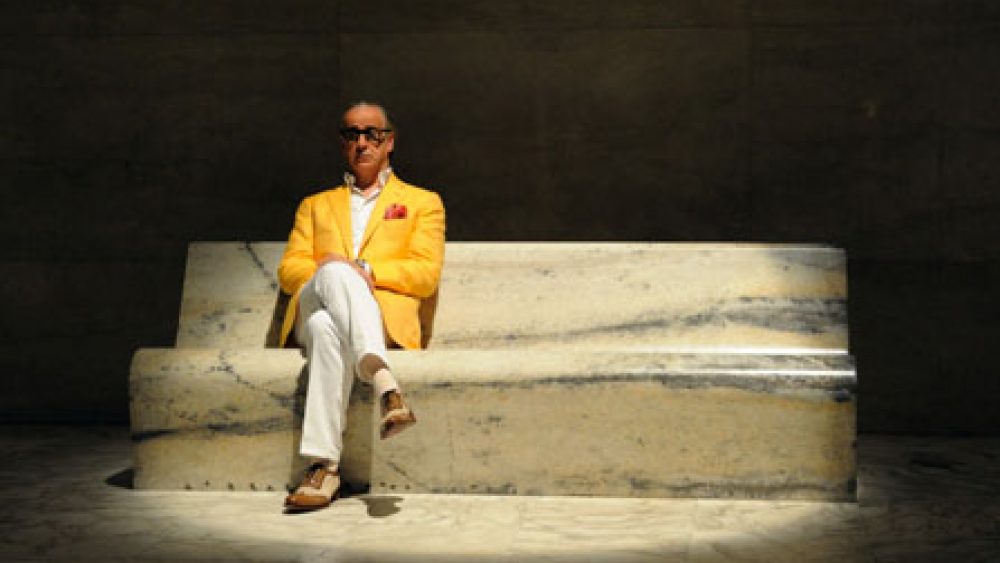
La grande bellezza is een aanklacht en een liefdesverklaring aan het adres van Italië. Paolo Sorrentino’s Tuin der Lusten.
Door Ronald Rovers
Rome is dood. Met die woorden opent Paolo Sorrentino’s dronken, swingende maar ook weemoedige reis naar het einde van de nacht over vergankelijkheid en de schitterende holle pretenties waarmee mensen zich onderweg naar het einde wapenen. Veel meer dan een verhaal is La grande bellezza een dans, een eindspel in pirouettes over de daken van Rome dat in al die wervelende cirkels de stad, de geschiedenis en het leven van z’n hoofdpersonage laat samenvloeien. Een stad, een geschiedenis en een leven die zijn vastgelopen.
Sorrentino (1970) is een maker die niet bang is dampende techno op de soundtrack te mixen met Gorecki’s grijsgedraaide derde symfonie. Die met z’n pretenties op de rand van holle retoriek durft te balanceren. Die met de vormen en sferen en ideeën uit Fellini’s La dolce vita en Antonioni’s La notte durft te goochelen, ook al horen die bij de zalig verklaarde canon van de filmgeschiedenis. Die in Il divo een halve eeuw schimmige Italiaanse politiek als een slowmotion operette durfde te laten zien, met de onlangs gestorven christendemocraat en vermeend maffiamaatje Giulio Andreotti als ongenaakbaar, stralend middelpunt. Met zoveel bravoure loop je het risico soms grandioos de mist in te gaan, zoals Sorrentino deed toen hij Sean Penn in This Must Be the Place op een Holocaust-roadtrip door Amerika stuurde. Maar wat daar niet lukte — onder alle visuele bombast emoties voelbaar maken — lukt hier wel.
Stralend middelpunt van de film is Jep Gambardella, zelfverklaard koning van de Romeinse high society en socialite extraordinaire, die net na de theatrale openingsscène zijn vijfenzestigste verjaardag viert. Aanbeden en benijd door mannen en vrouwen teert Gambardella na tientallen jaren nog steeds op de roem van zijn succesroman Het menselijk apparaat. Maar onder al die glamour is hij vastgelopen in z’n eigen ideeën en hang naar vermaak en verzuipt hij zich in de decadentie van de eeuwige stad, hand in hand met de rest van de feestende elites.
Costa Concordia
Behalve die ene uitbijter met Sean Penn maakt Sorrentino vanaf z’n debuut L’uomo in più films over maar één ding: Italië. Een Italië dat moreel en economisch aan de grond is gelopen en feestend ten onder dreigt te gaan aan narcisme en onvermogen. En natuurlijk stop je dan die onweerstaanbare metafoor van de Costa Concordia in je film, het cruiseschip dat voor de kust van Toscane symbool ligt te zijn voor de failliete Italiaanse spektakelmaatschappij. Gambardella weet dat hij in de spiegel kijkt wanneer hij het schip ziet liggen.
Toch is La grande bellezza niet zomaar een pastiche van La dolce vita. Fellini liet ook een decadente elite zien die dansend de realiteit buiten de deur wilde houden, maar zijn Italië was nog in opbouw, ook al stonden de fundamenten op de ruïnes van Mussolini’s fascistische paradijs waar de Italianen vijftien jaar lang nou eens niet in polonaise maar marcherend door de straten waren getrokken.
Sorrentino’s Italië is er erger aan toe. Dat danst om de dood buiten de deur te houden. Met op het bovenste dek van het cruiseschip een premier annex entertainmentkoning die jarenlang seksfeestjes en maffiadeals boven het algemeen belang verkoos. Maar Berlusconi was — en is — slechts het topje van de ijsberg, zegt Sorrentino. Die had vrij spel omdat de Italiaanse elites de andere kant op keken of zelf ook onderdoken in die op coke en viagra gestookte cultuur van exces.
Botox-avonden
Deze geasfalteerde versie van de Tuin der Lusten presenteert de villa’s en paleizen van Rome als de podia waarop de bovenklasse elke avond z’n solovoorstellingen komt geven, onverschillig voor alles behalve de inner circle. Waar men esthetiek verkiest boven ethiek, zoals de Britse journalist Tobias Jones in 2003 al schreef in The Dark Heart of Italy. Waar botox-avonden de gasten groepsgewijs van hun verval verlossen. Waar het orkest dat ooit op het achterdek speelde om de moed erin te houden is vervangen door de dreunen van dj’s die elke dissonant overstemmen. Want niemand mag het feestje verstoren.
Na vijftien jaar Berlusconi lijkt dat nu toch te gebeuren want de film zorgde in Italië de hele zomer voor discussies. Veel Italianen voelen zich aangesproken door wat ze in de spiegel zien die Sorrentino ze voor houdt. Zou dat dan eindelijk een tegenbeweging in gang zetten van mensen die het allemaal wel iets kan schelen? En is het dan misschien een voorzichtig voorteken dat binnenkort de Costa Concordia wordt weggesleept? Rome is dood, klonk het aan het begin, maar een stad is pas dood als de onverschilligheid overwint. Sorrentino lijkt met elke film een gevecht te leveren om dat te voorkomen, maar nog nooit zo krankzinnig extravagant als in La grande bellezza. https://filmkrant.nl/recensies/la-grande-bellezza/
——————————–
David Lang
David Lang (born January 8, 1957) is an American composer living in New York City. Co-founder of the musical collective Bang on a Can, he was awarded the 2008 Pulitzer Prize for Music for The Little Match Girl Passion, which went on to win a 2010 Grammy Award for Best Small Ensemble Performance by Paul Hillier and Theatre of Voices.[1] He was nominated for an Academy Award for “Simple Song #3” from the film Youth.
Life and career
Lang was born in Los Angeles, California. In his youth he played trombone. After completing his undergraduate degree at Stanford University, he went to the University of Iowa; he says, “There was a teacher in composition at the University of Iowa named Martin Jenni, and he had come to Stanford as a leave replacement to teach for a semester. And I just thought he was amazing. He knew a lot of stuff that I’d never heard of before. So when I thought about grad school, I went to Iowa. I was happy I did. It was really a kind of golden age. I really loved it.” Lang went on to earn a Doctorate of Musical Arts at Yale University in 1989. In addition to Jenni, his teachers have included Henri Lazarof, Lou Harrison, Richard Hervig, Jacob Druckman, Hans Werner Henze, and Martin Bresnick. Together with Julia Wolfe and Michael Gordon, Lang co-founded Bang on a Can in 1987. In 2008 he joined the Yale School of Music composition faculty.[Lang is of Jewish descent.
Awards
Lang has received several awards, including:
- Rome Prize, 1991
- Bessie Award, 1999Obie Award, 2000
- Pulitzer Prize in Music, 2008
- Grammy Award for Best Small Ensemble Performance, 2009
- Musical America Composer of the Year, 2013
- Royal Philharmonic Society Music Award, 2017
Stage productions
Collaborative works
In 1999 he collaborated with composers Julia Wolfe and Michael Gordon and librettist/illustrator Ben Katchor on the composition of the “comic strip opera” The Carbon Copy Building. The production won an Obie Award for Best New American Production. Lang, Wolfe and Gordon subsequently collaborated with librettist Deborah Artman on the ‘oratorio’ Lost Objects, the recording of which was released in summer 2001 (Teldec New Line). Their next collaborative project was Shelter, a multi-media work also with librettist Deborah Artman, for the Scandinavian vocal group Trio Mediaeval and the German ensemble musikFabrik, which was performed in Germany and the U.S. in 2005. In 2017 Chinese singer Gong Linna premiered Cloud River Mountain, written by the three Bang on a Can composers in addition to Lao Luo. They also premiere Road Trip, a celebration of Bang on a Can’s 30-year journey, together at the Brooklyn Academy of Music in October 2017
The difficulty of crossing a field
Also in 1999, Lang and playwright Mac Wellman based their opera The Difficulty of Crossing a Field on a short story by Ambrose Bierce, about an Alabama planter named Williamson who purportedly vanished while walking across a field in 1854](Bierce’s story reoccurs in urban-legend form, in which, coincidentally, the vanished man is often given the name David Lang.)
Battle hymns
A piece with multiple choruses and dance, battle hymns was first performed in Philadelphia in 2009 by the Mendelssohn Club and the Leah Stein Dance Company. Its U.S. west coast premiere was directed by Robert Geary and performed by the San Francisco Choral Society, Volti, the Piedmont Children’s Choir, and the Leah Stein Dance Company in April 2013 at the Kezar Pavilion. In May 2014, the Collegiate Chorale and the Manhattan Girls Chorus performed battle hymns at the Intrepid Sea, Air & Space Museum. In 2015, the Shenandoah Chorus (Shenandoah University) performed ‘battle hymns’ at an on-campus concert.
The little match girl passion
Lang was awarded the 2008 Pulitzer Prize in music for his piece The Little Match Girl Passion, composed in 2007 for Paul Hillier and his Theatre of Voices. The piece, based on Hans Christian Andersen‘s fable “The Little Match Girl” and inspired by Bach‘s St. Matthew Passion, was co-commissioned by the Carnegie Hall Corporation and the Perth Theatre and Concert Hall and premiered on October 25, 2007, in Zankel Hall in New York City. Tim Page of The Washington Post wrote that “I don’t think that I’ve ever been so moved by a new…composition as I was by David Lang’s The Little Match Girl Passion, which is unlike any music I know.”[13] For the 2017 Metropolitan Museum of Art‘s annual holiday concert, which has included the little match girl passion for five years, Lang has written a new version called the little match girl (observed), in which the audience is the congregation and participates with interstitial hymns.
The recording by Theatre of Voices and Paul Hillier of The Little Match Girl Passion on Harmonia Mundi received a 2010 Grammy Award for Best Small Ensemble Performance.
Death speaks
Lang composed this song cycle – a commission from Carnegie Hall and Stanford Lively Arts, premiered at both in late January, 2012 – as a companion piece to the little match girl passion. In that work, death was an implied character; in this follow-up song cycle, death is personified. For the texts sung by the character “Death,” Lang turned to the songs of Franz Schubert, from which he made his own translations into English. The part of Death was sung by Shara Worden of My Brightest Diamond; the instrumentalists included Bryce Dessner of The National (band) on guitar, Nico Muhly on piano, and Owen Pallett on violin and voice. National Public Radio chose the commercial recording as one of its ten favorite classical albums of 2013.
The whisper opera
Lang wrote the libretto by typing short, personal phrases into a search engine and writing down the results. The opera includes these anonymous confessions, which are whispered by soprano Tony Arnold, while four instrumentalists from the International Contemporary Ensemble never play above a hush. No audience member can hear the entire opera and it cannot be recorded, so it can only be experienced live.
Crowd out
Inspired by the powerful singing he heard from the crowd at an Arsenal F.C. football match, Lang came up with the idea of composing a song for over 1,000 people to sing. The first performance was 9 June 2014 at Birmingham’s Millennium Point. Singers were split into groups arranged on the steps of the atrium, each one with a leader with a megaphone. The conductor was Simon Halsey. The lyrics came from Lang doing internet searches for the phrase “When I am in a crowd I …” Lang then organised the results into thematic groups.
The national anthems
The composer surveyed all of the national anthems of the world, drew ideas and phrases from them, and translated them into English. Musically, it is very similar to The Little Match Girl Passion made up primarily of short, arpeggiated phrases. It is scored for chorus and string quartet. It was premiered on June 7, 2014 at Walt Disney Concert Hall by the Los Angeles Master Chorale, and the recording of the world premiere came out on Cantaloupe Music in the spring of 2016. The Winnipeg Symphony Orchestra, where Lang was Composer-in-Residence in 2015-16, performed the Canadian premiere of the national anthems, Trinity Choir Wall Street performed the New York premiere as part of their Twelfth Night Festival, and the London Symphony Chorus performed the UK premiere.
Anatomy theater
Inspired by the 18th-century practice of public dissections of criminals, anatomy theater, with music by Lang and libretto by Lang and visual artist Mark Dion, premiered at Los Angeles Opera in 2016. It begins with the confession and execution of an English murderess and follows the quest of the anatomist, searching for signs of evil within her body, including an aria for the corpse. The audience was served food and drink and placed in the balcony, to put it in the position of the 18th-century witnesses to the dissection. When the work premiered at LA Opera this June, critics called it a fascinating, grisly, and profound exploration of the nature of evil.
The loser
Lang’s one-act chamber opera for solo baritone is based on Thomas Bernhard’s novel, The Loser. Lang first read Bernhard’s novel in 1998 and immediately sensed it was something he wanted to set to music. Lang served as composer, librettist and director of the loser. Produced by Bang on a Can, the loser opened the 2016 BAM Next Wave Festival. Its unusual staging placed the singer Rod Gilfry on a platform above the orchestra seating and at eye level with the theater’s balcony. The only other person visible was pianist Conrad Tao, on a platform far behind Gilfry. A small ensemble was heard offstage. The orchestra seating was removed for the production. Lang and the loser were awarded the 2016 Richard B. Fisher Next Wave Award.
Symphony for a broken orchestra
More than 1,000 musical instruments owned by the School District of Philadelphia cannot be played because they are broken. As part of an ongoing project to repair the broken instruments, in collaboration with Temple Contemporary, the Philadelphia Orchestra, the Boyer College of Music and Dance, the Curtis Institute of Music, and the school district, Lang wrote a symphony specifically for the sounds that the instruments make in their broken state. Professional musicians and community members played in the orchestra or adopted an instrument. After the performance the instruments were fixed and returned to the public schools.
Prisoner of the state
This opera with the New York Philharmonic received its premiere on June 6, 2019. It is based on Fidelio by Beethoven and directed by Elkhanah Pulitzer.
Film music
He wrote the arrangements for the Kronos Quartet in Requiem for a Dream, scored the documentary The Woodmans, and wrote the soundtrack for (Untitled). In (Untitled), Lang wrote the score and the music for the main character, a classical composer played by Adam Goldberg. In Lang’s 2015 film score, Youth for Italian director Paolo Sorrentino, he also provided the music for the protagonist, a composer and conductor played by Michael Caine. “Simple Song #3“, an original song from Youth, was nominated for the 2016 Academy Award, Golden Globe Award[26] and Critics Choice Award for best original song. In Italy, the Youth score and “Simple Song #3” won the David di Donatello awards for Best Score and Best Original Song.The Youth movie soundtrack also featured Lang’s choral song “Just (After Song of Songs),” a composition that was originally commissioned by the Louth Contemporary Music Society. Most recently, he is scoring Paul Dano‘s film Wildlife.
Recorded works
Lang’s music has been released on the Argo/Decca, BMG, Cantaloupe Music, Chandos, CRI, Naxos Records, Point Music, and Sony Classical labels. His solo albums for Cantaloupe include The Passing Measures (2001) with the Birmingham Contemporary Music Group, Child (2003) played by Sentieri Selvaggi, and Elevated (2005) featuring performances by Audrey Riley, A Change of Light, and Lisa Moore. His music has also been represented on recordings by Icebreaker, So Percussion, Bang on a Can All-Stars and Evan Ziporyn. A version of “Wed” (1996) for string quartet is featured on ETHEL’s 2012 album Heavy His scores are published by Red Poppy Music (available from G. Schirmer, Inc.) https://en.wikipedia.org/wiki/David_Lang_(composer)
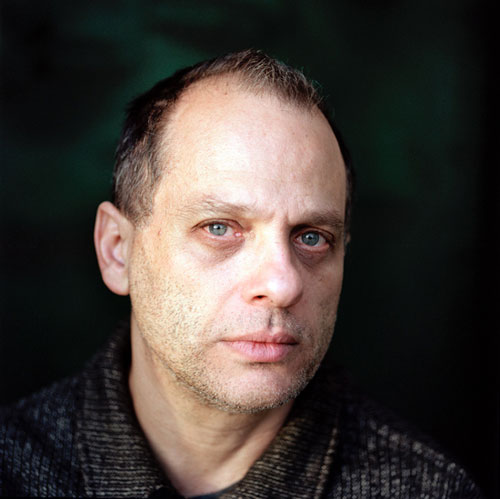
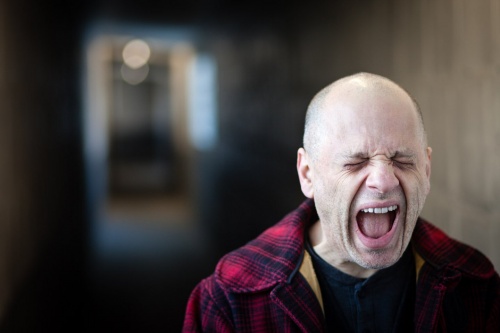

“With his winning of the Pulitzer Prize for the little match girl passion (one of the most original and moving scores of recent years), Lang, once a postminimalist enfant terrible, has solidified his standing as an American master.”
— The New Yorker
Passionate, prolific, and complicated, composer David Lang embodies the restless spirit of invention. Lang is at the same time deeply versed in the classical tradition and committed to music that resists categorization, constantly creating new forms.
Lang is one of America’s most performed composers. Many of his works resemble each other only in the fierce intelligence and clarity of vision that inform their structures. His catalogue is extensive, and his opera, orchestra, chamber and solo works are by turns ominous, ethereal, urgent, hypnotic, unsettling and very emotionally direct. Much of his work seeks to expand the definition of virtuosity in music — even the deceptively simple pieces can be fiendishly difficult to play and require incredible concentration by musicians and audiences alike.
Lang’s simple song #3, written as part of his score for Paolo Sorrentino’s acclaimed film YOUTH, received many awards nominations in 2016, including the Academy Award and Golden Globe.
His opera prisoner of the state (with libretto by Lang) was co-commissioned by the New York Philharmonic, Rotterdam’s de Doelen Concert Hall, London’s Barbican Centre, Barcelona’s l’Auditori, Bochum Symphony Orchestra, and Bruges’s Concertgebouw; it premiered June 2019 in New York, conducted by Jaap van Zweden. prisoner of the state receieves its European premieres during the 2019/2020 season.
Other recent works include the writings, commissioned by Carnegie Hall and the Netherlands Kamerkoor, and premiered by Theatre of Voices; the mile-long opera co-created with architect Elizabeth Diller and premiered in New York City’s mile-long elevated park The Highline; symphony without a hero, commissioned and premiered by the Seattle Symphony; the loser, which opened the 2016 Next Wave Festival at the Brooklyn Academy of Music, and for which Lang served as composer, librettist and stage director; the public domain for 1000 singers at Lincoln Center’s Mostly Mozart Festival; his chamber opera anatomy theater at Los Angeles Opera and at the Prototype Festival in New York; the concerto man made for the ensemble So Percussion and a consortium of orchestras, including the BBC Symphony and the Los Angeles Philharmonic; mountain, commissioned by the Cincinnati Symphony, death speaks, a song cycle based on Schubert, but performed by rock musicians, including Bryce Dessner from The National and Shara Worden from My Brightest Diamond; the whisper opera, for the International Contemporary Ensemble and soprano Tony Arnold; and love fail, an evening-length work for the early music vocal ensemble Anonymous 4, with libretto and staging by Lang.
Lang’s works are performed around the globe by the BBC Symphony, the International Contemporary Ensemble, eighth blackbird, Santa Fe Opera, the New York Philharmonic, the Netherlands Chamber Choir, the Boston Symphony, the Munich Chamber Orchestra, the Kronos Quartet and many others; and at festivals and venues such as Lincoln Center, the Southbank Centre, Carnegie Hall, the Kennedy Center, the Barbican Centre, the Brooklyn Academy of Music, Tanglewood, the BBC Proms, MusicNOW festival, The Munich Biennale, the Settembre Musica Festival, the Sydney 2000 Olympic Arts Festival and the Almeida, Holland, Berlin, Adelaide and Strasbourg Festivals.
His music is used regularly for ballet and modern dance around the world by such choreographers as Twyla Tharp, the Paris Opera Ballet, the New York City Ballet, Susan Marshall, Edouard Lock, La La La Human Steps, The Netherlands Dance Theater, and Benjamin Millepied, who choreographed a new piece by Lang for the LA Dance Project at BAM in 2014.
Lang’s film work includes the score to Paolo Sorrentino’s YOUTH, and for Jonathan Parker’s (Untitled), the music for the award-winning documentary The Woodmans, and the string arrangements for Requiem for a Dream, performed by the Kronos Quartet. His music is also on the soundtrack for Paolo Sorrentino’s Oscar-winning La Grande Bellezza.
Lang is the recipient of numerous honors and awards, including the Pulitzer Prize, an Academy Award and Golden Globe nominations, Musical America’s Composer of the Year, Carnegie Hall’s Debs Composer’s Chair, the Rome Prize, the BMW Music-Theater Prize (Munich), and grants from the Guggenheim Foundation, the Foundation for Contemporary Performance Arts, the National Endowment for the Arts, the New York Foundation for the Arts, and the American Academy of Arts and Letters. In 1999, he received a Bessie Award for his music in choreographer Susan Marshall’s The Most Dangerous Room in the House, performed live by the Bang on a Can All-Stars at the Next Wave Festival of the Brooklyn Academy of Music. The Carbon Copy Building won the 2000 Village Voice OBIE Award for Best New American Work. The recording of the passing measures on Cantaloupe Records was named one of the best CDs of 2001 by The New Yorker. His CD pierced on Naxos was praised both on the rock music site Pitchfork and in the classical magazine Gramophone, and was called his “most exciting new work in years” by the San Francisco Chronicle. The recording of the little match girl passion released on Harmonia Mundi, received the 2010 Grammy Award for Best Small Ensemble Performance.
Lang is co-founder and co-artistic director of New York’s legendary music collective Bang on a Can. His work has been recorded on the Sony Classical, Harmonia Mundi, Teldec, BMG, Point, Chandos, Argo/Decca, and Cantaloupe labels, among others.
His music is published by Red Poppy Music (ASCAP) and is distributed worldwide by G. Schirmer, Inc. https://davidlangmusic.com/about/
https://www.youtube.com/channel/UCH-hxEXy-PmAz1vrCpIZtVg SILBERSEE tegengekomen en nog niet doorgespit… 🙂
